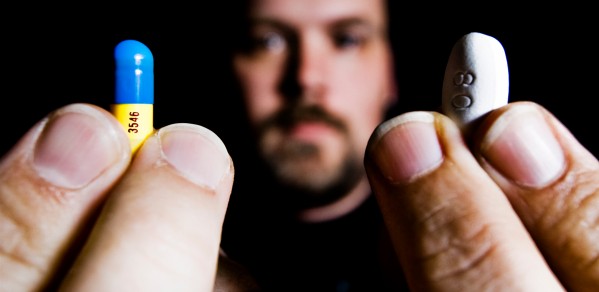
A new study co-authored by a Department of Engineering researcher recommends an approach to clinical trials that includes tracking the influence of patients’ behaviours on a treatment’s benefits.
The results suggest that previous clinical trials may have underestimated true effects because of a weakness of the trial design.
Dr Ben Seymour
While randomized, double-blind controlled trials have been used for years to remove patient or doctor bias to discover the efficacy of a treatment, they have not factored in the effects of patients' behaviours such as diet and lifestyle. Consider the case of the patient who believes they are receiving a real drug and becomes optimistic about the outcome, thus making better lifestyle choices such as more exercise. Another, more pessimistic patient convinced they are receiving the placebo might instead become less motivated about getting better.
According to the researchers, such factors have a significant impact on the effectiveness of a treatment and current procedures might not be able to assess this influence. “The results suggest that previous clinical trials may have underestimated true effects because of a weakness of the trial design,” said Dr Ben Seymour, Wellcome Trust Intermediate Clinical Fellow in the Computational and Biological Learning Laboratory and a co-author of the study.
To shore up these weaknesses, the researchers recommend a trial design known as ‘two-by-two.’ In the standard double-blind trial, patients are given a 50 percent chance of being in the control group. Tweaking this figure and informing patients of their chances of getting the real drug or the placebo enables researchers to see how patients' behaviours influence the results.
In a two-by-two trial, one set of patients is assigned randomly to a high-probability-of-treatment group while another is assigned to the low-probability group. In the entire study, 50 percent of patients will get the treatment and 50 percent a placebo, but within each group, it could be 70/30, for example. Furthermore, patients are informed about their likelihood of getting treatment.
Studying the differences in outcomes for the high- and low-probability groups gives an idea of how patients' behaviours alter efficacy.
A meta-analysis of six randomized clinical trials performed by the team supported their hypothesis that interaction between treatment and behaviour can have an effect on health outcomes. The next step will be to bring these ideas into an active clinical trial.
These results are published in PLOS ONE in the paper “Accounting for Behavior in Treatment Effects: New Applications for Blind Trials,” The study was a collaboration between researchers at Princeton University, California Institute of Technology, Harvard School of Public Health and the University of Cambridge.

